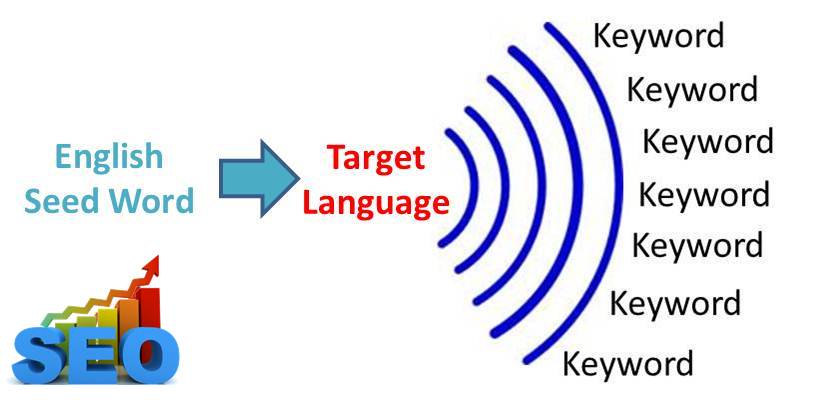
Introduction
When it comes to measuring the success of your localisation efforts, it is essential to use metrics with caution. Vanity metrics are quantitative data that may appear impressive, but lack meaningful insights into business performance. These surface-level measurements, like social media followers or website traffic volume, do not directly correlate with important goals such as revenue or customer engagement. When measuring localisation success, use metrics with caution and prioritise actionable insights. In this blog post, I will explore the dos and don’ts of using vanity metrics to evaluate your localisation strategies, helping you to make informed decisions for global expansion.
What are vanity metrics and how do you identify them?
Let’s begin by defining exactly what vanity metrics are. Whether you are aware of them or not, you are likely using them to evaluate your marketing campaigns. But what exactly do they entail? Vanity metrics are essentially the opposite of actionable metrics. They refer to indicators that may appear impressive on a report, but do not necessarily contribute to measuring your performance. Why is this the case?
Vanity metrics are easily obtainable from your campaigns and can generate large quantities of data. However, these metrics are not directly correlated with measuring your return-on-investment. During business meetings, vanity metrics can serve as a convenient way for marketers to demonstrate the immediate benefits of their marketing endeavours. However, we all recognise that marketing does not operate in such a straightforward manner. But do not get me wrong. Vanity metrics can indeed be beneficial, as long as they are utilised thoughtfully and conscientiously.
Now, you might be wondering how to differentiate between a vanity metric and an actionable metric. Well, it is not that simple. In reality, any metric can be a vanity metric. Therefore, it is important to consider your goals and what the metrics you are using actually measure. To help you with that, try asking yourself these questions:
- Can you base a business decision on the result?
- Does the data genuinely reflect the truth?
- Can you intentionally reproduce the result?
Indeed, if your data appears to be rather random and you lack control over it, it is likely a vanity metric. This is because you do not have true influence over it and, consequently, cannot enhance the process. It is not that you should completely disregard this data, but rather you should avoid depending on it as a reliable metric for making business decisions.
Remember, your metrics should be SMART (specific, measurable, achievable, relevant and time-bound) and actionable. This way, you will truly understand what they signify for your business within a specific context.
Examples of vanity metrics
Let’s look at some examples of metrics that can easily turn into vanity metrics, if not utilised correctly:
- Number of followers or likes.
- Traffic or impressions.
- Number of newsletter subscribers.
- Number of purchases or downloads.
- Number of customers.
The number of followers or likes on social media, although commonly used as a metric, lacks meaningful significance. Merely relying on these numbers fails to reflect the impact of your social presence or lead to specific conversions. Instead, metrics like social sessions, engagement per follower, share of voice compared to competitors, sentiment analysis, and mentions and shares from high-quality followers provide more valuable insights.
Similarly, traffic or impressions may appear impressive, but without proper context or specific goals, they become inconsequential for making informed business decisions. To gain a comprehensive understanding, it is essential to incorporate additional indicators such as bounce rate, time on page, unique users, pages per session, pages per user per month, organic branded search lift, or cost-per-lead, for example.
An additional illustration involves the number of newsletter subscribers when it comes to email marketing. The true value lies in measuring the open rates and engagement levels, rather than solely relying on the subscriber count.
It may come as a surprise, but whilst the number of purchases or downloads is worth considering, these figures alone cannot provide meaningful insights without proper context. For instance, software downloads may not necessarily translate into long-term engagement. Instead, metrics like year-over-year total purchases, uninstall rate, trial conversion rate, renewal rate, upgrade rate, seasonal adjustments, and key action frequency offer a more comprehensive understanding.
Again, evaluating the number of customers without considering their spending habits or repeat purchases may result in skewed insights. Analysing metrics such as customer renewals, upgrades, spend per order, items per order, active subscriptions, and the percentage of new and returning customers provides a more accurate representation.
How to measure localisation success
It’s okay to use vanity metrics!
Let me clarify something. Considering vanity metrics is not a problem, as long as you assess their significance appropriately. In fact, vanity metrics can serve as valuable indicators of progress in terms of brand awareness, share of voice, or sentiment. They provide insights that can help you better understand your target audience.
It is important to acknowledge that whilst vanity metrics may seem less relevant in terms of transactional marketing goals today, they do play a significant role in a broader, long-term strategy. Experienced marketers understand that certain marketing efforts can generate a short-term sales impact whilst also contributing to long-term success. This is why vanity metrics should not be used to measure the progress of your business goals, but they do hold value when it comes to achieving your marketing objectives.
Metrics for A/B testing
When localising your campaigns, regardless of the market, it is crucial for your team to establish a set of indicators that assess the quality and success of your localised content. This allows you to approve your strategy and secure long-term budgets. However, it is essential to concentrate on meaningful data to effectively demonstrate performance and value. Whilst measuring a vanity metric like the number of impressions for your localised content may show impressive brand awareness, it offers limited insight into actual conversions and may not lead to significant business outcomes.
Nevertheless, vanity metrics can still be used to optimise your marketing content, whether it is on social media platforms or organic or paid search landing pages. For example, conducting A/B testing and comparing vanity metrics such as clicks and impressions can be a powerful approach to improving your content, imagery, messaging and more. Whilst these metrics may not provide a direct correlation with your return-on-investment, they offer valuable insights into when, how and where your audience engages with your company.
Metrics for content localisation
When assessing the success of your localisation efforts, various indicators are often used to evaluate the delivery of content in multiple languages on a large scale. These metrics primarily focus on performance and are offered by localisation teams to show their operational efficiency. Examples include the number of target languages, number of translated words, number of localised assets, cost-per-word, proportion of reused content, quality scores, and translation speed. However, whilst it is important to assess language quality in terms of spelling, grammar and rules, relying solely on linguistic metrics is insufficient to understand how local customers perceive and embrace the localised content.
To truly measure the value created through localisation, it is crucial to consider cultural and functional effectiveness as well, through user interaction metrics like unique visits or number of conversions from the local target market, click-through rates on localised pages, bounce rates on localised pages, as well as the percentage of visitors from a local target market accessing content in the local language, search engine rankings for target keywords in the local market, and more.
Metrics for user experience
Localisation success indicators should go beyond operational metrics and be closely aligned with the local user experience and customer journey. For global organisations, the key to growth lies in converting local audiences into customers and ensuring their acquisition and retention. To gain valuable insights, it is important to consider customer-centric data to make informed decisions and take strategic actions to drive business forward.
Monitoring metrics such as impressions, clicks and visits can provide valuable insights into the user experience and also help gauge customer awareness at various stages of their journey. Additionally, during the consideration stage, you might consider tracking metrics like sign-ups or email subscribers, whilst the initial steps of the conversion stage could be measured by the number of purchases made.
To deliver true value, your localised content needs to be practical and user-friendly for local markets. This can be achieved by incorporating data on adoption and defection rates, daily active users, the localised product’s revenue, outsourcing costs and resolution rates, which emphasise the project’s quality. Additionally, key performance indicators (KPIs) that highlight localisation success as a competitive advantage include time-to-market, differentiation from competitors, and increased market share. By leveraging these indirect KPIs and metrics, you can evaluate the success of your localisation based on how effectively the localised content guides intuitive, timely and relevant customer journeys.
Metrics for customer lifetime value
Vanity metrics also play a role in measuring the success of your localisation efforts when it comes to understanding the customer lifetime value (CLTV). Whilst vanity metrics provide insights into the customer journey, it is the CLTV that truly reflects how well you track and understand the consumer journey in the context of localisation.
To effectively measure the CLTV, it is important to build attribution models and implement lead scoring. This allows you to attribute customer actions and behaviours to specific marketing efforts and gauge their impact on the CLTV. By setting business goals and values aligned with user actions, you can better understand the factors that contribute to long-term customer value. As an example, any vanity metric related to customer profile data, intent and engagement data, or purchase data could help you set up your predictive lead scoring to build your attribution model.
In this process, leveraging vanity metrics becomes valuable. A/B testing and utilising vanity metrics can help refine your marketing efforts targeted towards the local audience when assigning credit to various marketing channels or touchpoints. By analysing the insights gained from vanity metrics, you can enhance your understanding of the customer journey and gain clarity on their CLTV.
Conclusion
In conclusion, when measuring the success of your localisation efforts, it is important to use vanity metrics with caution and prioritise actionable insights. Vanity metrics may appear impressive, but they lack meaningful insights into business performance. Instead, focus on metrics that are SMART and directly correlate with important goals such as revenue and customer engagement. Prioritise specificity and adapt indicators on the fly to enhance their value when analysing data, taking into account both performance and customer experience. Whilst vanity metrics can be useful indicators of progress in terms of brand awareness or marketing efforts, they should not be relied upon on their own as metrics for making business decisions.
Want more bespoke digital marketing strategy advice that is tailored to your business and your goals? Get in touch with Webcertain today and our friendly team of international digital marketing experts will be happy to help!





